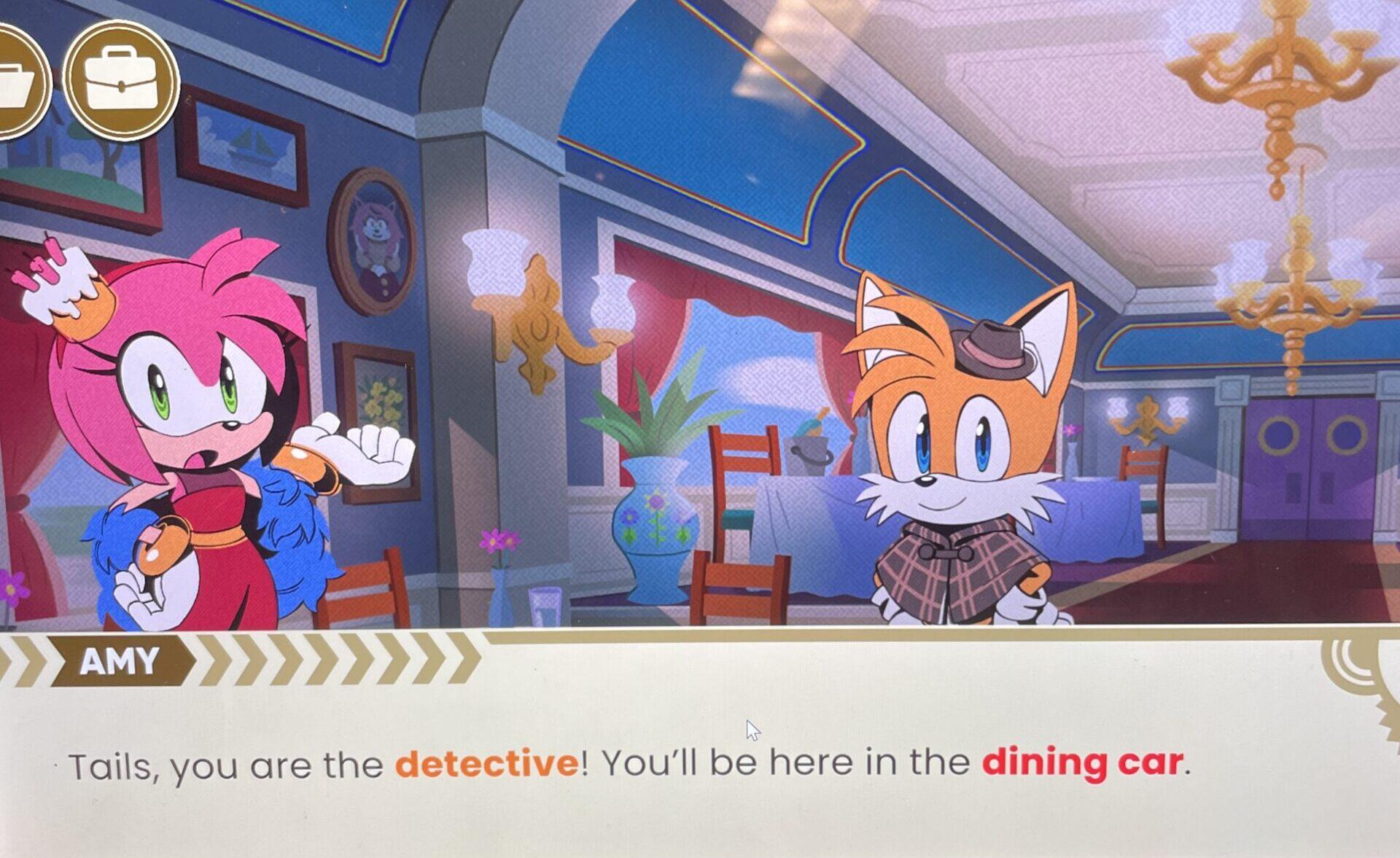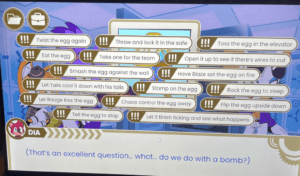For my mystery critical play I chose the game The Murder of Sonic from Steam, a murder mystery that takes place on a bullet train, produced by SEGA primarily for an audience of children and preteens/teens.
When playing The Murder of Sonic it became clear to me that the game designers implemented a lot of tactics in the mechanics and storyline to avoid the player from being bored.
One mechanic of the game that seemed essential to the game was that clues were highlighted in a bright color when hovered upon- this prevents the player from having to use process of elimination clicking everything in their view. I would imagine this was implemented to prevent the player from becoming fatigued and frustrated by having to grind so hard to find clues. Similarly, as characters spoke to you and revealed information, important details were highlighted in a bright green or orange to discern from regular conversation (pictured below). This design choice tells players know what information they’ll need to recall and eases the mental load throughout solving the mystery.

One mechanic of the game that struck me from a designer standpoint was that, while you are able to make different decisions ex: what text to say, what clue to pick, what suspect to pick, weather to interrogate someone or not. But if you make the incorrect choice you are guided by the game to pick again. For example in this game specifically, your assistant detective Tails would say “Hmmm… I don’t think we’re ready to interrogate them” if you hadn’t collected enough clues to confront a character, or “Try one more time, we need to think!” if you used the wrong clue from your inventory to confirm a suspicion. This seems like a choice by the game designers to keep the player on track of the storyline/ arc, while still allowing players to feel like active participants in the world of the game.
A key part of the mystery genre was shown in this game through the plot, which had many twists upon discovering new information. There was a theme of going back and discovering holes in the logic of suspects who had already been cleared of suspicion… essentially having plot twists. At a certain point, just as the mystery was coming to the end, we discovered another plot twist that the murder wasn’t fully faked and that the entire team was in actual danger. I think the game designers added these tropes in order to keep the players enthralled throughout the puzzling process of getting clues together, especially given the game’s young intended audience.
One additional thing is that the game had a sonic the hedgehog style mini games in-between the narrative and point and click actions in the rest of the game. Also at some point there was a side quest of conducting a heist while on the bullet train, completely unrelated to the mystery of who killed Sonic, in which the pattern of game winning/progression (find clues, confront someone, play a minigame to win a confession) was broken up. (pictured below) This switch up in gameplay had no other purpose but to maintain the audiences captivation, supporting my claim about the game designers decisive implementations to prevent user boredom.






